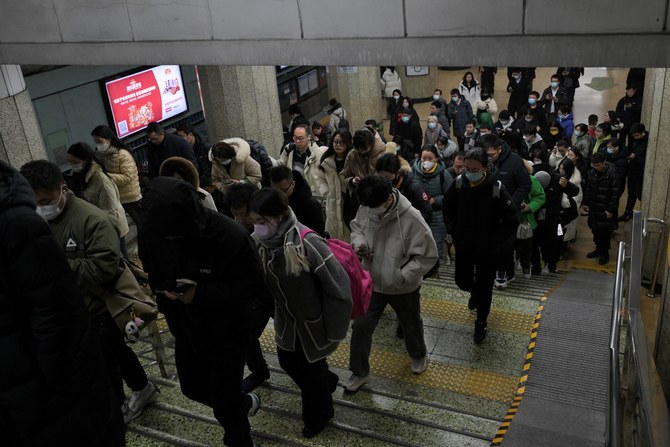Khaled Abou Zahr
For years, many experts claimed that one of the biggest risks for planet Earth was the projected increase in its population. They would state that the trajectory of population growth would lead to starvation and wars and, along with the impact of climate change, mean that Earth was heading for a catastrophic event.
This was never correct. A quick look at the UN’s forecasts, from decades ago up to today, reveals consistent predictions of an increase up to about 10.1 billion by 2100 followed by a reduction. Yet, the theme of overpopulation has always been dominant.
The reality is that Earth is indeed heading for a catastrophic event, but for the opposite reason – it is an aging population and the predicted decline in the world’s population that is the true risk. Virtually every country in the world is experiencing growth in the number and proportion of older people in their population. Population aging is poised to become one of the most significant social transformations of the 21st century, with implications for nearly all sectors of society, including the labor and financial markets, demand for goods and services, such as housing, transportation and social protection, and family structures and intergenerational ties.
The figures are clear and hit all major countries. The latest trends in population aging, as outlined in the 2022 revision of the UN’s World Population Prospects, indicate that the population aged 65 years and above is growing at a faster pace than the population below that age. The global percentage of people in this age group is expected to rise from 10 percent in 2022 to 16 percent in 2050. By 2050, it is projected that the number of individuals aged 65 years or above worldwide will be double the number of children under the age of five and nearly equivalent to the number of children under 12.
Yet, it is clear that this aging is mainly affecting developed countries, which have been – as their descriptive name indicates – leading the global political and economic agendas. This change in population is synonymous with lower productivity, less dynamism and less global power. Moreover, developed countries are now facing what is known as inverted age pyramids.
The inverted age pyramid refers to a population age structure in which the proportion of elderly individuals is larger than that of younger individuals, resulting in a shape that is opposite to the traditional pyramid-shaped age distribution. This pattern is typically associated with lower birth rates, longer life expectancy and declining fertility rates.
This poses major societal challenges, which will supersede anything else and will impact these countries’ resources and capacity to act internationally with power. Moreover, these changes are leading to a rise in healthcare expenses. This situation is also putting in danger historical social pacts, which were embodied by social welfare policies and guaranteed annuities for the elderly. With an inverted age pyramid, this pact is no longer sustainable and questions arise about countries’ capacity to cater for an expanding elderly population. Moreover, this change also impacts productivity, causing potential deficits in the labor force, which in turn reduces financial savings.
And this is why the current immigration waves across developed countries, which are being met with feeble policies attempting to stem them, are viewed as a deliberate strategy by policymakers to counteract the challenges posed by an aging population. This is, in reality, the undeclared solution chosen by leftist and progressive political parties, when perhaps encouraging more births, along with a better planned immigration policy, would be a preferable solution.
This format of immigration is a panicked reaction to the results of their flawed analyses and policies on overpopulation. Yet, it also guarantees them more votes, as right-wing parties tend to become the bad guys who look to expel this new segment of the population.
The impact of these new waves is not only domestic, as they have also inverted the global political order. In fact, the capacity of these countries to act internationally has been hampered as they face chaos and disorder on the domestic front, which is amplified via social media. There is no doubt this deep societal change has a real impact and is intuitively and partially responsible for the chaos noticed in the political landscape of these developed countries.
The interesting fact is that, as we contemplate a world with a new competition between the US and China, both countries face this same issue. The number of Americans aged 65 and older is projected to increase from 58 million in 2022 to 82 million by 2050. And China’s population is aging faster than almost all other countries in modern history. In 2050, the proportion of Chinese over retirement age is predicted to be 39 percent of the total population. Looking at the impact of aging populations indicates that the country that is capable of solving this problem, whether through people or the use of artificial intelligence and robots, will probably take the lead.







